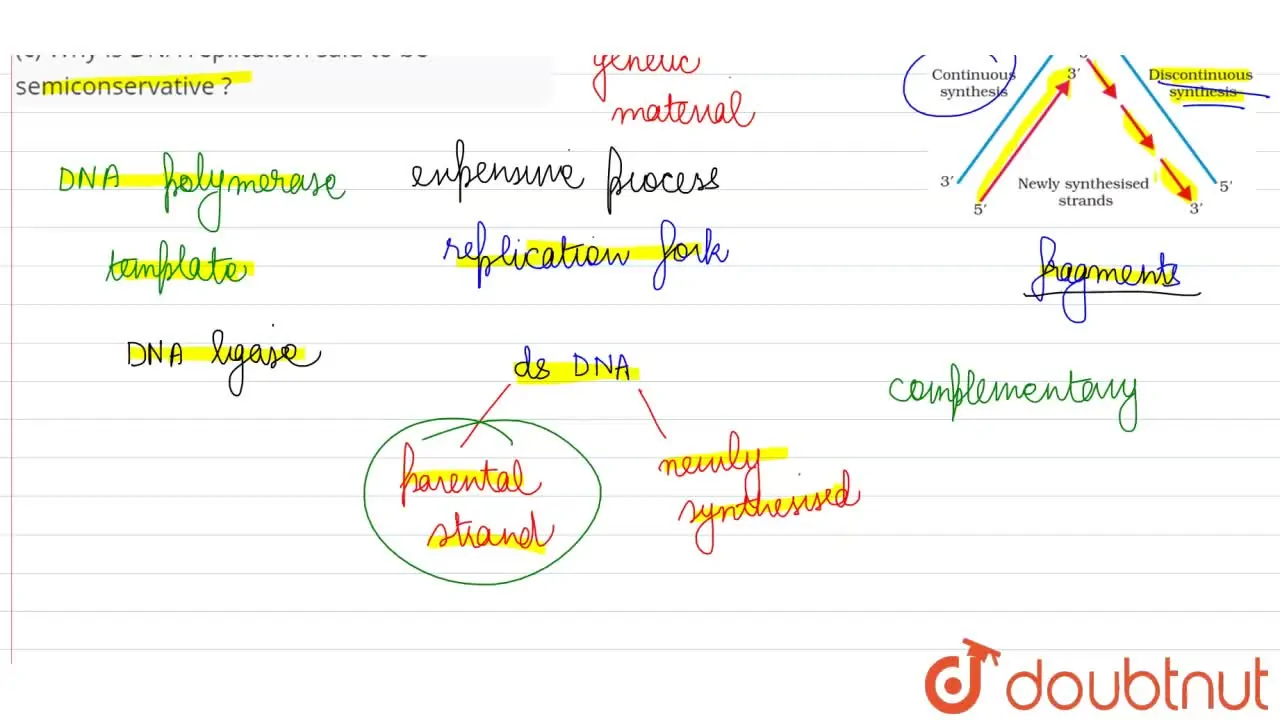(a) Name the stage in the cell cycle where DNA replication occurs.
(b) Explain the mechanism of DNA replication. Highlight the role of enzymes in the process.
(c) Why is DNA replication said to be semiconservative ?
Video Solution
Text Solution
(a) DNA replication occurs in S phase of the cell cycle.
(b) Enzymes involved in DNA replication are :
(i) DNA-dependent DNA polymerase : catalyses the polymerisation of polynucleotides in a very short time only in 5' -3' direction with accuracy.
(ii) DNA ligase: Joins the discontinuously synthesised short segment called Okazaki fragments on one of the template strands.
(c) The two strands of DNA separate and act as a template for the synthesis of new comlementary strands. After the completion of replication, each DNA molecule has one parental and one newly sytnthesized strand and this scheme was termed a semiconservative DNA replication.
DNA replication is auto catalytic, it occurs during S-phase of cell cycle. Watson and Crick proposed semi conservative mode of replication for DNA. 1958 Meselson and Stahl's proved the semi-conservative mode of replication. They worked with E. coli using a heavy isotope of Nitrogen, N15. E. coli was grown with N15 for several generation till the bacteria become completely labelled with N15 They were then shifted to medium with normal N14 nitrogen. Samples were taken affer every generation and tested for the presence of N15andN14 using density gradient centrifugation with CsCI. The first generation was found to be hybrid between N15andN14 second generation contain two types of DNA, 50%, light (N14) and 50% intermediate. This is only possible if two strands separate during replication and act as a template for synthesis of new comlementary strands, thus proving a semiconservative mode of replication.

|
Updated on:21/07/2023
Similar Questions
Explain the process of DNA replication.
View SolutionIn cell cycle, DNA replication occurs during
View SolutionDNA replication is:-
View SolutionDNA replication includes :-
View SolutionDuring cell cycle, DNA replicates
View SolutionDNA replicates during:
View SolutionThe direction of D.N.A. replication is :
View Solutionthe usual method of DNA replication is
View SolutionIn eukaryotes , the process of DNA replication is :
View SolutionDNA replication is found in :-
View Solution


